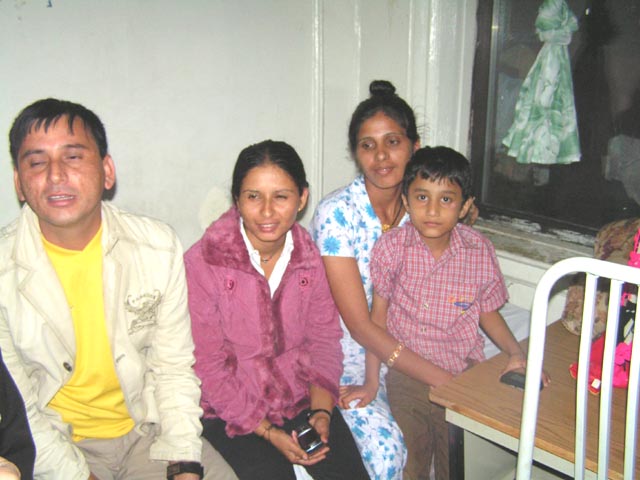
The Saga of Bhutanese Refugees and their Search for Home
Bhutan has long been regarded as a mystical, peaceful Shangri-La which prides itself not on its gross domestic product (GDP) but on its GNH – Gross National Happiness. Well, if that is so, then there is an ugly side to this picture-perfect reputation, a story of exclusion, of discrimination, of outright ethnic cleansing of its citizens who happen to be Hindus of Nepali origin.
Indeed, in the 1990’s, tens of thousands of ethnic Nepalis were stripped of their Bhutanese citizenship. Born and brought up in Bhutan, they were ruthlessly expelled by the government, compelled to live in a wasted no-man’s land, in seven crowded refugee camps on the outskirts of Nepal. Others fled of their own accord to avoid arbitrary arrest and detention, and a complete loss of their rights. Nor has Nepal accepted these people whose forbearers were Nepali and who had left for Bhutan three generations ago to find a better life.
One can only imagine what the kind of hullabaloo there would have been if America were to push out thousands of its naturalized citizens, stripping them of all rights, based simply on the language they spoke or the faith they practiced. Yet Bhutan has managed to do this with impunity, destroying the lives of thousands of its own citizens who have languished in refugee camps, their lives in limbo. Many are the youth who were born in these camps and have wasted the best years of their lives – 20 years – living in limbo, with no dreams and no future. Two decades have been spent as stateless people, belonging nowhere, allowed to have no allegiance, no sense of purpose.
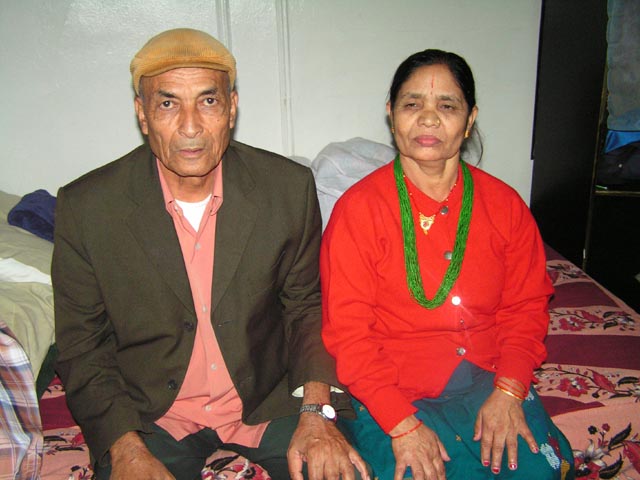
Difficult as their situation has been, the one silver lining has been the offer of the United States to resettle up to 60,000 of the 106,000 refugees. About 8,000 of them have arrived in the US and will be given government assistance to settle down. This help is for eight years – after which they have to fend for themselves. Many of them speak no English, and have no marketable skills. What will life be like for them as they get their bearings in a world light years removed from their simple rural existence in Bhutan, and then Nepal?
For many of these ethnic Nepalis, it is their Hindu faith which sees them through their tribulations, and yet it is this Hindu faith and culture which has, to a large extent, been responsible for their loss of homeland. And now it is that same Hindu faith which is under siege, as some refugees report coercion to embrace Christianity. On the line are jobs, material comforts and an easier life.
These refugees have been resettled by the United Nations working in tandem with several organizations, and have landed up in many states, destined to live very different lives, depending on the towns and cities they have landed in, from Ohio to Georgia to California, New York and New Jersey.
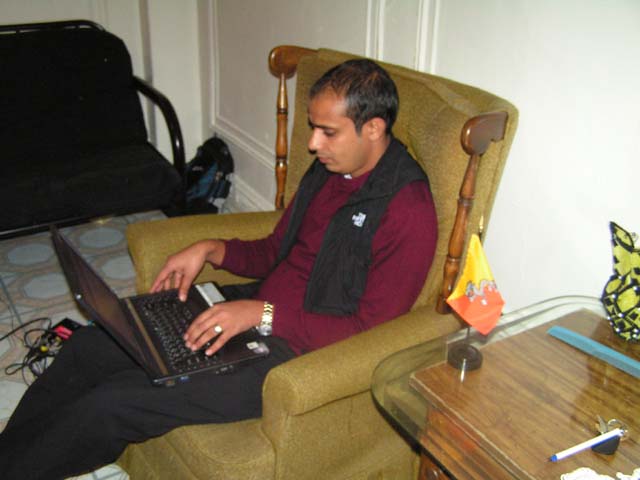
The Journalist in Exile
I went to check this out first-hand, to see a Little Bhutan that was taking shape in the rough, hard-nosed Bronx. On a Sunday evening, I met with TP Mishra, a 25 year old refugee who was just six years old when his father was beaten up, kept under police surveillance and then stripped off his citizenship and the whole family expelled. Mishra has known no other home but the congested huts of the refugee camp.
He came and met me outside the rundown, bleak and yet somehow handsome old apartment building in the Bronx, a place with an unkempt, struggling patch of grass in front. In this hard neighborhood even the grass struggles to survive. In Mishra’s apartment, there is scant furniture and bare necessities. There are no fancy décor items, just a black PVC sofa, a chair and on one side a couch where he sleeps. The bedroom is shared by his two sisters, Tika and Dillu. The parents are still in the camp, a family in waiting.
Yet a miniature flag has pride of place on his side table, a part of his life wherever he goes, wherever he lives. It is his identity. It is the flag of Bhutan, the country which has disowned him.
It is for TP Mishra, as for all the refugees, a tale of unrequited love.
Mishra is fortunate to have something which many of the refugees don’t have – an education – and that has freed him to do some worthwhile things. With his faithful laptop by his side, he is a journalist in exile, he was my window into the world of the Bhutanese refugees. He has his own website and two blogs and is the voice of his community.
I later met his sister Tika, a lovely girl who looked wan and pale, low in joy and smiles. She is learning English through the International Rescue Committee, the resettlement agency, and the days seem to hang heavy on her, as she has no job. Her younger sister Dillu is working in a food company, packing food items. As they improve their English, their accessibility to the outside world will increase.
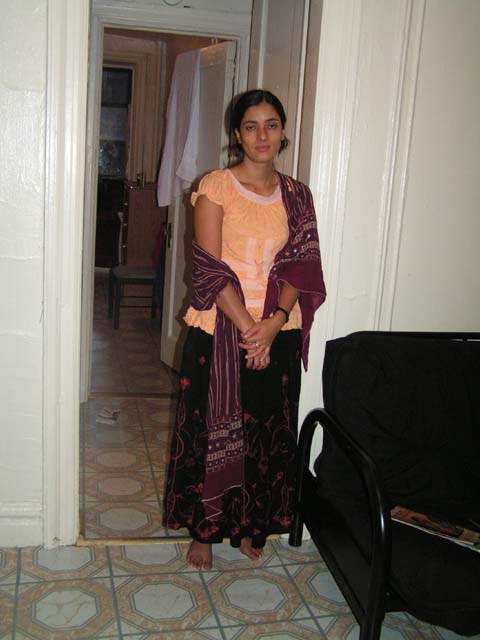
Creating New Families
Later Mishra took me to meet the other residents of this building, the largest settlement of refugees in the NY area – with about 50 people in 9 families living in the same walk up building. They move easily between each other’s homes, eating with each other, chatting about world and personal matters, almost like an extended family of many cousins, uncles and aunts. Those who have left behind their parents in the camp look to the elders here as surrogate parents.
In one home I met the family, with several sons, daughters, grandchildren and grandparents who were dressed in traditional garb, the man with a Nepali topi or cap, the woman with Nepalese scarves and jewelry, their faces leathery and weather-beaten. Jaya Narayan, 78, and his wife Nar Maya, 68 were happy to meet me, a Hindu, and took me to their small makeshift shrine for their evening aarti. She lit a diya and the husband blew loudly on the conch as the family gathered close.
We sat and talked to sons and daughters-in-law, to the small children who were born in the camps, and have never seen Bhutan. The old are burdened with their memories but perhaps the young will be able to map out a new future – Perhaps America will be the country for them, the one they will identify with.
And so here they are together – sisters, sisters-in-law, brothers and cousins- all together, a large extended family sitting together almost as if they are back in the refugee camp. We were given a touch of Hindu hospitality – cups of steaming, sweet milky chai in steel tumblers. You knew instinctively their Hindu values were intact for no matter how little they had, they wanted to share it with visitors.
It’s like an extended family, with everyone closely connected with each other. Says Mishra: “Sometimes I feel I’m not in America – I still feel I’m within the camp or with my community. If I lack anything, I can come down to my neighbor’s and open the fridge and take what I need. And if they lack anything they can come to me.”
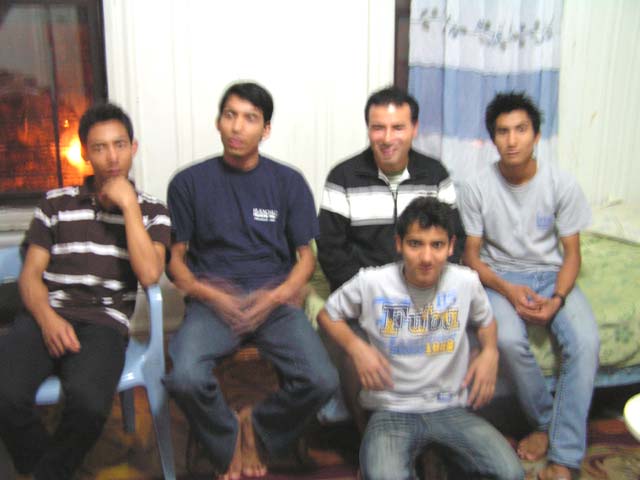
Connected by Computers
Yet what struck me the most was the incongruousness of the bland, Spartan furnishings and the large shining computer in every home I visited – the Internet has liberated these refugees to connect with the Bhutanese Diaspora – while they have no immediate family they can connect with family and friends – the community of the refugee camps- be they in Australia or Milwaukee. And through video they can watch each other and laugh and talk together. Young and old gathered around the computer, communicating with far flung family via Yahoo Messenger Chat, talking with their daughters in Australia.
Mishra took me to yet another floor, yet another family. Prem Siwakoti, Abi Siwakoti, Dil Siwakoti, Shree Ram Regmi, and Suman Regmi were sitting together although they live on different floors. The young boys were friends from the camp, and the father of one was their teacher in school – there is a sense of camaraderie. Abi is working as a food packer in a factory but hopes to join college. Prem too is working in a plant and going for evening classes.
“Bhutan is our motherland and it is our country but we grew up in Nepal so we have an equal affection for it,” says Abhi. He talks of his other friends and family in Oregon and other states and how they are involved with farming. Most of the Bhutanese refugees have been settled in 7 different countries from Norway to Australia, and he says, “We are far physically but we are very near because we keep talking to each other. We talk to our relatives in Nepal and India – the Internet has helped us.”
The Bronx Bhutanese were getting ready for Durga puja to get blessings for a good life. Abi Sivakoti says, “We pray for ten days, and on the tenth day we get blessings and tikka from our parents. We have a very good meal and that’s how we celebrate. There are so many pandits in the refugee camps but there isn’t one here. We do hope to get one here because we don’t want to miss out on our culture.”
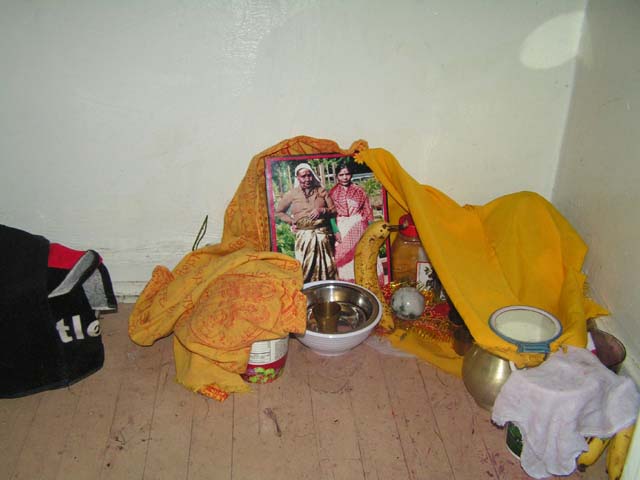
They took me to their shrine in a closet – coats hung on top incongruously, below was the little shrine with images of family members who have passed on. On the wall were calendars with the images of Sri Krishna and Lakshmi- a diya burns on the table. It is a part of their daily life, and the patriarch of the family lights an incense stick every morning and reads the holy book.
A New Life in America
The refugees are scattered in many states and each is leading a very different life. Mangala Sharma is an activist in Minnesota, and came to the US in 2000 when she received political asylum. Since then she has been working to advocate on behalf of the refugees.
She says, “I was born and raised in Bhutan. In fact I am the
fourth generation of women born in Bhutan in my family. I used to work for United Nations, then in a refugee camp in Nepal.” She has founded her own organization called Bhutanese Refugee Aiding for Victims of Violence.
As she points out, Bhutanese refugees started coming to the US only in 2008. About 20, 0000 have been resettled so far and another 50, 0000 will be coming in four to five years. She says, “People that are coming to Minnesota are mostly that are related to us. We are about 300 people here and more are coming.”
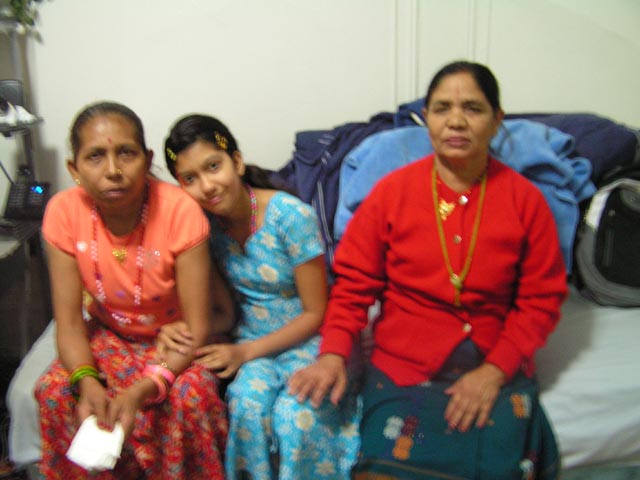
Taking a proactive role the Bhutanese refugees here have formed Nirvana Center, which is a collaborative effort with the Hindu families there and which seeks to lend the Bhutanese support and help them preserve their culture. Here, as in other places, the refugees have many hopes and want to establish a community center where they can gather, network and have access to social services and a place to pray.
Says Sharma, “So far, Minneapolis has been very good place for resettlement. We have many more benefits than other states; they provide food stamps, some cash assistance to families with children below five years and who are in 200% poverty level. This has attracted refugees from around the world including the Bhutanese.”
She says what while most of the people come from a farming background, the community also includes some professionals who are both studying and working, thus preparing for the future. She says, “Nirvana Center is the outcome of people’s needs and hunger to preserve our culture and religion. We have satsang every fortnight, and we completed the Art of Living workshop which people loved.”
This urge to provide cultural and social services is very much of a self-help effort, with those who have been here longer providing visits to new refugees, a clothes and food drive, tutoring and temple visits. Pramanenda Khatiwada is a board member of Nirvana Center and a refugee himself. He came with his family to the US in 2008 and is now working with World Relief, which provides resettlement to refugees. He is working with World Relief, an agency that provides resettlement to refugees.
Real people living their lives in the present, struggling to find a future. Isn’t this how history is created, with all these layerings, small vignettes of people losing homes, identities, and creating new homes, new identities.
Yes, this is the fabric of migrations through history, of very personal griefs which turn into statistics, dry numbers and figures, drained of the blood and tears of very intimate, very real life stories.
(C) Text and photos Lavina Melwani

2 Comments
This is really good.. TP Dali
Hi, I am really saddened by what the Nepalese refugees had to go through and am pained to know that they are still undergoing difficulties. However, I have come across lots of blogs where I read that they are now making a new start. I am all praise for their never say die attitude.
I am from Bhutan and and am not very sure about what exactly happened then, because I was too young to understand. But now when I read about the plight of these people, I feel really sad.
My best wishes are with you all.